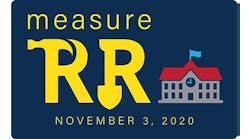The Access Board (U.S. Architectural and Transportation Barriers Compliance Board) has published final guidelines for making facilities accessible to children, but the U.S. Department of Justice has not yet adopted them. So, although the guidelines are not yet enforceable, they offer guidance to those involved in construction or renovation of children's facilities-particularly, elementary schools serving children 3 to 12 years old.
When these guidelines are adopted, they will become part of the Americans With Disabilities Act Accessibility Guidelines, which are enforced by the Justice Department.
Placements are key Two charts, "Children's Reach Ranges" and "Specifications for Water Closets Serving Children Ages 3 through 12," (page 323) will assist you with revised location recommendations for washrooms. Here you will find forward or side, high- and low-reach ranges by age, as well as specifications for water closet centerlines, toilet-seat heights, grab-bar heights and toilet-tissue-dispenser heights.
Accessory mounting heights Figure 1 details recommended minimum and maximum mounting heights for soap dispensers, towel dispensers, napkin-tampon vendors, warm air dryers and mirrors.
Lavatory clearances and protective panels Figure 2 details lavatory knee space, mirror and lavatory height requirements for children in wheelchairs. Figure 3 (page 324) illustrates maximum countertop and apron height dimensions.
A standard wheelchair-accessible compartment Figure 4 (page 324) is a basic layout recommendation, along with placements for the water closet and grab bars. Additional figures are available that illustrate similar data for standard alcove (end of row), and alternative (36" and 48") compartments, along with specifications for small public washrooms with single and alternate compartments, and individual toilet rooms.
The Justice Department is expected to adopt the guidelines within a year. Full inclusion in the ADA accessibility guidelines could be two or more years away, but it makes sense to be ahead of the curve and avoid costly retrofitting down the road.

